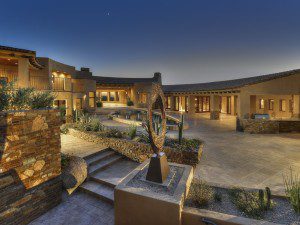 By Joe Szabo, Scottsdale Real Estate Team
Starting your home renovation can be a daunting task and your general contractor can either be your best friend or your worst enemy. Finding the right fit will make your renovation much easier, so it is potentially the most important decision you will make with your renovation.
By Joe Szabo, Scottsdale Real Estate Team
Starting your home renovation can be a daunting task and your general contractor can either be your best friend or your worst enemy. Finding the right fit will make your renovation much easier, so it is potentially the most important decision you will make with your renovation.
How to Hire and Work with a General Contractor By Joe Szabo, Scottsdale Real Estate Team
 By Joe Szabo, Scottsdale Real Estate Team
Starting your home renovation can be a daunting task and your general contractor can either be your best friend or your worst enemy. Finding the right fit will make your renovation much easier, so it is potentially the most important decision you will make with your renovation.
By Joe Szabo, Scottsdale Real Estate Team
Starting your home renovation can be a daunting task and your general contractor can either be your best friend or your worst enemy. Finding the right fit will make your renovation much easier, so it is potentially the most important decision you will make with your renovation.





 Please note that this Scottsdale Real Estate Blog is for informational purposes and not intended to take the place of a licensed Scottsdale Real Estate Agent. The Szabo Group offers first class real estate services to clients in the Scottsdale Greater Phoenix Metropolitan Area in the buying and selling of Luxury homes in Arizona. Award winning Realtors and Re/MAX top producers and best real estate agent for Luxury Homes in Scottsdale, The Szabo group delivers experience, knowledge, dedication and proven results. Contact Joe Szabo at 480.688.2020,
Please note that this Scottsdale Real Estate Blog is for informational purposes and not intended to take the place of a licensed Scottsdale Real Estate Agent. The Szabo Group offers first class real estate services to clients in the Scottsdale Greater Phoenix Metropolitan Area in the buying and selling of Luxury homes in Arizona. Award winning Realtors and Re/MAX top producers and best real estate agent for Luxury Homes in Scottsdale, The Szabo group delivers experience, knowledge, dedication and proven results. Contact Joe Szabo at 480.688.2020, 







